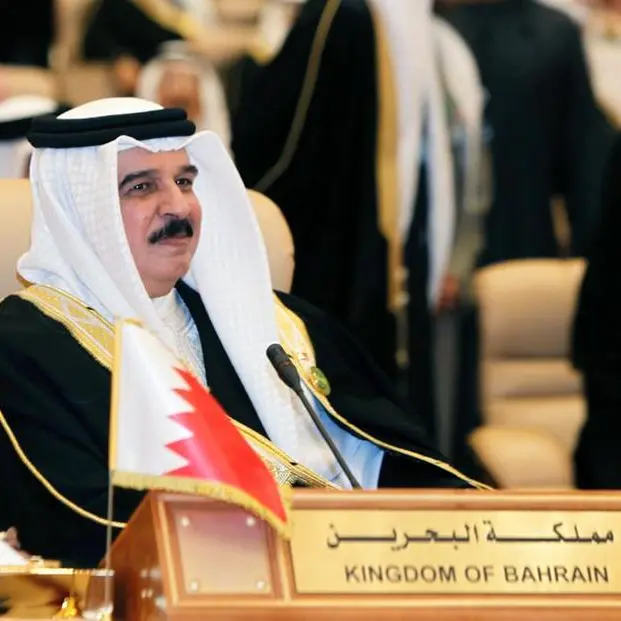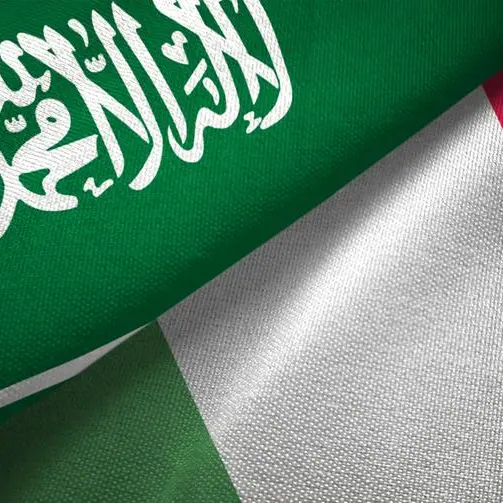PHOTO
UAE is implementing clean and renewable energy projects as a strategy to combat climate change and has taken early steps towards utilising these types of energy, most notably solar energy, to meet most of its energy needs, to achieve sustainable development and conserve the environment.
The UAE is preparing to bid farewell to the last drop of oil and achieve a balance between economic development and preserving a clean, healthy and safe environment, reinforcing its global leadership in adopting clean energy technologies, most notably solar energy, through a portfolio of power stations, including the Noor Abu Dhabi Solar Power Plant, the Shams Solar Power Station in Abu Dhabi, and the Mohammed bin Rashid Al Maktoum Solar Park in Dubai, which rely on the country’s sunny climate throughout the year.
Hosting the 28th Conference of the Parties to the United Nations Framework Convention on Climate Change (COP28) in November will enable the UAE to create an interactive global platform for showcasing its efforts towards transitioning to renewable energy, especially solar energy. The UAE plans to harness renewable resources to meet some 50 percent of its energy needs by 2050.
Solar energy plays a vital role in realising the UAE's strategic goal to achieve climate neutrality by 2050, marking the culmination of its efforts and local and global journey in climate action over the past three decades. Solar energy will help achieve the strategy's targets, which include diversifying income sources, creating opportunities for sustainable economic and social growth, maintaining a balance between sustainable development and reducing the effects of climate change, building a knowledge-based economy, and utilising clean technology to achieve sustainable development and create a diverse mix of energy sources.
A Second Source of Energy
Solar energy is the second source of electrical energy produced in the UAE, and the country benefits from its sunny climate throughout the year. The sun is an ideal alternative to generating renewable and sustainable energy that will help realise the country’s zero greenhouse gas emissions strategy at competitive costs.
The latest report by the International Renewable Energy Agency (IRENA) shows that solar energy is cheaper than all other new electricity generation solutions based on fossil fuels. Meanwhile, photovoltaic solar energy technology has offered the best cost-reduction solution over the past decade.
The UAE has launched ambitious initiatives to increase its solar energy utilisation, continuing to build renewable and clean energy projects. The most prominent of these projects is Shams Solar Power Station (the Abu Dhabi Solar Project) and the Mohammed bin Rashid Al Maktoum Solar Park in Dubai, whose production capacity will reach 5,000 megawatts (MW) by 2030.
Largest Solar Power Plant in The World
The UAE is also building the world's largest independent solar power plant, the Al Dhafra Solar PV facility, which will have a capacity of up to 2 gigawatts (GW) of electricity.
The plant will support Abi Dhabi’s diversification of its renewable energy sources, increase its overall energy production capacity, and reduce its carbon dioxide emissions.
The plant aims to reduce the emirate's carbon emissions by more than 2.4 million metric tonnes annually, equivalent to removing some 470,000 cars from the road and providing electricity to over 160,000 homes in the UAE.
Largest Concentrated Solar Power Plant
The fourth phase of the Mohammed bin Rashid Al Maktoum Solar Park, managed by the Dubai Electricity and Water Authority (DEWA), has a capacity of 950 MW under the independent power producer system and is the world's largest Concentrated Solar Power Plant (CSP) plant located in one area.
The plant combines CSP and photovoltaic solar energy technologies, and its fourth phase will generate 700 MW of CSP energy and 250 MW of energy from photovoltaic solar panels.
This phase uses a system of equivalently cutting reflectors with a total capacity of 600 MW, or three units with a capacity of 200 MW each, as well as the world's tallest solar tower at 262.44 metres with a capacity of 100 MW using molten salt technology.
When completed, the fourth phase will be the world's largest solar energy storage project with a capacity of 15 hours, making energy available around the clock. Currently, 300 MW of CSP energy production has been operating under the project’s fourth phase, with 100 MW coming from the solar tower and 200 MW from the Parabolic Trough Reflectors system, in addition to 217 MW from photovoltaic solar panels, making it the largest operational CSP station in the world.
The Shams Solar Power Station, located in Al Dhafra, Abu Dhabi, is one of the world's largest operational CSP stations, with a capacity of 100 MW. It is a pioneering renewable energy project in the UAE and is the first CSP plant that is a utility-scale facility in the Middle East and North Africa.
The station is some 120 kilometres (km) southwest of Abu Dhabi and 6 km from Zayed City. This location was chosen for its ample space, high levels of direct solar radiation, and easy access to the existing energy grid infrastructure.
The site selection also aligns with Abu Dhabi's economic development goals, including stimulating economic activity in Al Dhafra.
Established in 2013, the Shams Solar Power Station supports the UAE's efforts to diversify its energy mix and reduce its carbon footprint by offsetting around 175,000 tonnes of carbon dioxide annually, equivalent to planting 1.5 million trees or removing 15,000 cars from Abu Dhabi's roads. Since its launch, Shams has helped achieve the UAE's goal of generating 27 percent of its electricity from clean energy sources in 2021, and it is expected to contribute 50 percent by 2050.
The station, which covers an area of 2.5 square kilometres, utilises more than 768 parabolic trough collectors to provide sustainable, low-cost and safe electricity.
Shams is a CSP station where electricity is generated using solar heat. The station uses reflective parabolic troughs, where rows of mirrors capture the sun's heat and convert it into electrical energy through an advanced steam turbine. Heat is safely and efficiently transferred from the solar field to a closed water-steam cycle using high-temperature synthetic oil aided by a solar steam generator.
The steam is heated to a high temperature within the superheaters and then pumped to drive the turbine, which powers a 15-kilovolt generator with a net electrical output of 100 MW, enough to supply electricity to 20,000 homes.
Shams enables the UAE to diversify its energy sources and reduce its carbon footprint.
Largest Single-Site Solar Power Production Project
The Mohammed bin Rashid Al Maktoum Solar Park, managed by DEWA, is the world's largest single-site solar energy project under the Independent Power Producer (IPP) model. Its production capacity will reach 5,000 MW by 2030, with a total investment of up to AED50 billion.
Once completed, the solar park will help offset more than 6.5 million tonnes of carbon emissions annually. The solar projects currently operating within the park have a capacity of 2,327 MW using solar panel technology, photovoltaic panels and CSP.
The clean energy capacity of Dubai's energy mix is 15.7 percent, which is expected to reach 25 percent by the end of 2030.
The solar park will help achieve Dubai's Clean Energy Strategy 2050 and Net Zero Carbon Emissions Strategy aimed at generating 100 percent of the emirate’s power capacity from clean energy sources by 2050.
The first phase of the project began with a capacity of 13 MW using photovoltaic panels in October 2013, followed by the second phase with a capacity of 200 MW using photovoltaic panels in March 2017.
The third phase was commissioned in November 2020, with a capacity of 800 MW using photovoltaic panels, while the fourth phase will have a capacity of 950 MW, with 700 MW coming from CSP and 250 MW from photovoltaic panels. The park has an operational capacity of 517 MW, and work is underway to complete the remaining projects.
The fifth phase will have a capacity of 900 MW using photovoltaic solar panels technology, and 800 MW is already operational, with work underway to complete the remaining projects.
The sixth phase will have a capacity of 1800 MW using photovoltaic solar panels and will be operated over several stages.
Largest Independent Solar Power Plant
The world's largest independent solar power plant, the Noor Abu Dhabi Solar Power Plant, began its commercial operations in April 2019. Located in Sweihan, Abu Dhabi, covering an area of 8 sq.km, it comprises 3.2 million solar panels.
It produces some 1.2 GW of energy, reducing reliance on natural gas and helping offset the carbon footprint by 1 million metric tonnes annually.
Noor Abu Dhabi is the first major project of the UAE's water and electricity company that utilises sustainable technology and is a major landmark in the transformation of the energy sector. In addition to its size, the project also broke another record in its bidding process in September 2016, when it obtained the most competitive tariff in the world at 8.888 fils/kWh.
The Abu Dhabi National Energy Company (TAQA) owns 60 percent of the project, while the Marubeni Corporation and Jinko Power own the remaining 20 percent each.
The project has won many awards during its development phase, in addition to being named the Best Power Generation Project of the Year at the 2020 MEED Projects Awards and the Best Project of the Year at the 2020 Middle East Solar Industry Association (MESIA) Awards.
First Hydroelectric Power Plant in The Arabian Gulf Region
DEWA is constructing the first hydroelectric power station that utilises stored water technology in the Hatta region of Dubai, the first of its kind in the Gulf Cooperation Council (GCC) countries, with a production capacity of 250 MW and a storage capacity of 1,500 MW-hours. The expected lifespan of the station is up to 80 years, with an investment of AED1.421 billion. The project is expected to be completed in the fourth quarter of 2024.
The hydroelectric power station will rely on water stored in the Hatta Dam and another upper dam in the mountainous region to generate electricity. Advanced turbines powered by clean energy produced by the Mohammed bin Rashid Al Maktoum Solar Park will operate in reverse to pump water from the Hatta Dam to the upper dam. When required, the turbines will generate electricity and supply it to DEWA's grid by harnessing the power of water flowing from the upper dam to the Hatta Dam through an underground water channel that stretches 1.2 km. The station’s electricity production efficiency and storage cycle is expected to reach 78.9 percent, with an immediate response to energy demand within 90 seconds.























